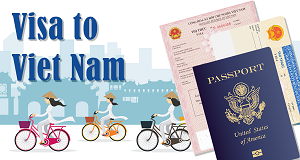Religion in Vietnam: Asian spirituality with a European touch
The Hill (4/4/2012) - For more than 2,000 years, Asia’s great spiritual influences have converged in Vietnam to leave a legacy of typically Asian, tolerant spirituality. Vietnam’s Buddhism is mixed and intermingled with Confucian philosophy about righteous living. Central to Vietnam’s philosophy is harmonious living in the community, rather than strict adherence to religious authorities and scriptures. This explains why in Vietnam, religion is a private affair in which zealotry and radicalism are absent.
Vietnam today has the second-largest Catholic congregation in Southeast Asia. Protestantism also entered Vietnam and is growing rapidly. Last year marked the 100th anniversary of the establishment of Protestantism in Vietnam and the census registered some 1.2 million followers.
Vietnam’s all-encompassing views on doctrine are best exemplified by the indigenous Cao Dai. The group reveres as saints various historical figures, including Jesus and Mohammed, but also Shakespeare and other philosophers, poets and even European and Asian statesmen. In that vein of acceptance, Vietnam holds numerous religious celebrations every year, from Christmas to Ramadan, and of course the local Buddhist holidays.
Vietnam’s religiosity is non-intrusive, but ubiquitous. Some 80% of the population follow some form of spiritual belief. Pagodas are everywhere, mostly small and hidden in tree-shaded side streets or in the alleys of villages. Almost all homes exhibit an ancestor worship altar, and family tombs can be seen in rice fields throughout the country. With 25,000 places of worship across the country and some 3 million religious books published in a year, Vietnam has been called a “museum of religions.”
Following a long history of Chinese domination, Vietnam’s form of Confucianism and Buddhism is distinct from China’s but without any perceptible sectarianism. Chinese characters, long abandoned in daily life, are still in use in pagodas, but Vietnamese pagodas are generally single-storied structures, while their Chinese counterparts are towers. Vietnamese pagodas are enclosed by a garden and a pond, where sacred turtles represent the founding of the Le Loi dynasty. Larger pagodas serve as places of worship as much as for recreation. Nobody seems to mind the mingling of words of prayer with children’s banter.
While pagodas tend to be intimate, the French built big. Hanoi’s cathedral was inaugurated in 1866. It lies in the heart of the city and remains a place of worship for Catholics. Walking around the austere, double-towered structure, the visitor is shrouded in incense wafting from nearby pagodas. Hundred years ago, Christmas at the cathedral would have been a French affair, but today, revelers run the place – although most of them are there for the party, not the mass.
The architecturally most interesting church in Vietnam is Phat Diem, some 80 miles south of Hanoi in Ninh Binh province. The church is a cross between European and Asian design, with a distinct pagoda feel to it. The church was taken apart piece by piece and rebuilt by the government during a recent renovation. The Vietnamese government pays for maintenance of houses of worship if they are national monuments.
Land rights issues
Disputes over land rights have created tensions that have spilled over into religious life. Because of its history of colonialism and the war against the United States and the regime it supported, Vietnamese are highly sensitive about restitution of land to owners predating the war’s end. The legislature made clear in 2003 that this includes land claimed for spiritual use. On the other hand, the government is making more land available for religious organizations like the new archbishoprics in Danang and Daklak, a Buddhist university in Hanoi and particularly additional 15-ha to expand La Vang holy land for pilgrimage of Catholic followers.
The U.S. government recognizes Hanoi’s efforts. Former Ambassador Michael Michalak told Congress that most religious disputes are in fact disagreements over land. For the visitor as for the vast majority of Vietnamese who are not engaged in political issues over land use or appointments of religious officials by foreign powers, such as the Vatican, no religious tensions are visible. From the northern mountains to the southern delta of the mighty Mekong river, Vietnam’s religious heritage is a feast for the senses as much as a delight for history buffs. And whatever the visitor’s personal religious persuasions, locals will be happy to explain with a smile.



